I sacrificed a DC controller today... Here's what I found out:
First, some pictures:
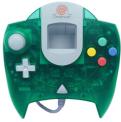
1) This is the controller I hacked.
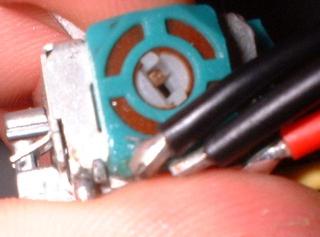
2) DC Controller Doodad turned to the left (Hall effect, or just a pot?)
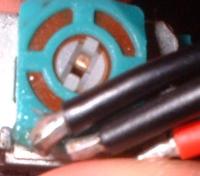
3) Turned right
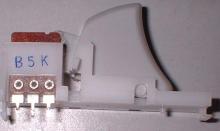
3) Trigger, conveniently labelled. It's a 5kohm doodad. I own a PC gameport joypad with an analog thumbstick that uses something that is this same style. There are 3 input/output lines, and I get the 0..5kohm range when I take a multimeter reading.
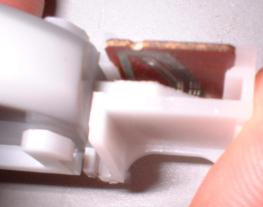
4) Inside of trigger. It's a pot as far as I'm concerned (but I was never much of one for exact wording). The trigger slides up and down the metal contact line that you can see - it makes contact with two lines, the middle line and the far right line.
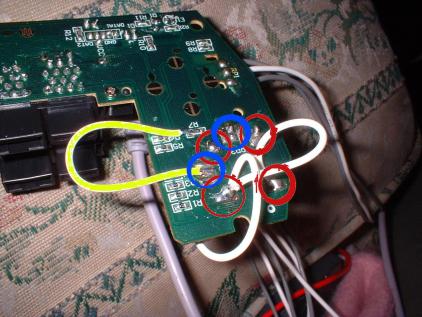
5) The circuitboard. Ignore the wire I colored
yellow - that is me working around some torn-out circuit contact material.
The two blue circles mark where the x and y axes are soldered onto the circuit board - each of the 2 hall effect (I wanna call them pots sooo bad) have 3 contacts, just like a pot. I get a range of 0(left)..5(center)..10kohm(right), making them the equivilent of a standard 10kohm pot.
The four red circles mark where four posts (see the next picture) are soldered from the entire cube that makes the thumbstick. Each of the four posts is attached to the same piece of conductor which makes up the shield around the whole 1/2 inch^3 thumbstick box. The 4 posts connect with a very small grid that spans most of the whole circuitboard, and pretty much contacts one side of each button. I assume that I would call it the ground, but I'm not quite sure what that implies. After removing the thumbstick box, I soldered 3 wires to where the posts were to connect all of them back together again.
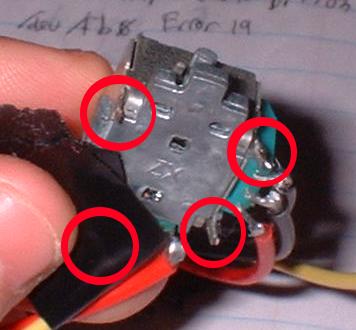
6) The underside of the thumbstick unit
I could be wrong, but from what I could tell, the controller seemed really sensitive to change - if EVERYTHING wasn't hooked up (including the trigger, the 4 metal posts, and the x and y axes), you can't expect anything to work properly. It's not quite as easy to work with as the Dual Strike hack in this sense.
I yanked out the 10kohm pots from the controller, and tried a few different combinations of my own. I popped one of the crappy Dual Strike 20k pots in, and it did what I would expect. The effective range was the first half of pot (the first 10k). Turning the pot to the left resulted in the game's character moving left, 1/4 turn->center, 1/2 turn->right, 3/4 turn->right, full turn -> right.
I just bought a bunch of 5k pots. They are behave strangely. (0k left, 4k center, 5k right). Can you guys tell me anything about that?
Anyway, I wired up some of those to the DC controller. I don't know why, but they actually worked as far as I could tell what with the strange ohmage of these pots in particular. I could go right and left, but when I max out the pot in either direction, the character on screen is going 1/2 speed. I would have expected for the character to move in the following manner: move pot to the left->move character fast left, center pot->slow left, right pot->stop. I dunno

, it didn't seem to do that.
So my conclusion would be that an arcade joystick with 10kohm pots could work (if there was such a thing). One possible problem might be that there's no calibration for the DC, so if the center point was a little bit off, it would really suck - you need the joystick to self-center perfectly or you're in trouble. Darnit, I think that the Nintendo 64 calibrates itself to the center point when you turn it on. You can confuse the n64 by pushing the joystick to the left on startup. Old-school PC joysticks used to have mechanical calibrators on the joystick itself. Something like that would be perfect.




 Home
Home Help
Help Search
Search Login
Login Register
Register
 Send this topic
Send this topic Print
Print



